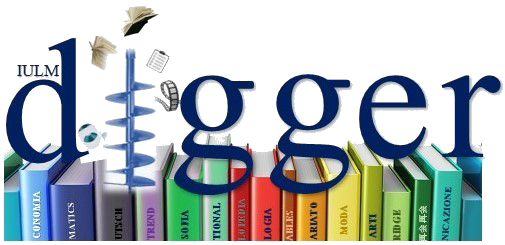This book is a systematic analysis of the most important events that are marking the contemporary design evolution with the goal to orient oneself and to find again a meaning for the design action, beyond the simple events and trends record. The analysis starts from the first decades of the twentieth century until today and it examines the innovation subject in the design field and the influence exerted on the society: our relation with the objects and the related behavior, the way to live at home and to imagine the domestic landscape, the drawings up of theories and experimentations that in the past have worked together – and that today are working together – to outline the facet of the contemporaneity through the design action. In the middle of this analysis there is the influence of the new electronic technologies like the field that changes our relation with the objects and with the nature of our same bodies. Some subjects are analyzed through the work of some contemporary designers: Philippe Starck, Droog Design, the Bouroullec brothers, Alberto Meda, Denis Santachiara, the Valvomo, Bernard Tschumi, Vito Acconci, Asymptote and many others. Particular attention is turned to the relation between architecture and industrial design, examined like design fields today less and less different: the industrial design expanding his efficacy on the urban space and the architecture acquiring properties typical of the objects world through the interface concept with the people. This way today the design can answer to the needs of the greatest possible number of people, beginning from the users more “weak”, through a greater accessibility of the places, suggesting behavior, stimulating to the action.
Questo libro rappresenta un'analisi sistematica degli eventi più significativi che stanno segnando lo sviluppo del design contemporaneo, attraverso la quale orientarsi e trovare di nuovo senso per l’azione progettuale, oltre la semplice registrazione dei fatti e delle tendenze. A partire dagli anni ’70 fino ad oggi, viene esplorato il tema della innovazione nel progetto e l’influenza esercitata sul sociale: il nostro rapporto con gli oggetti, i differenti comportamenti che ne scaturiscono, il modo di vivere in casa e di concepire l’ambiente domestico, così come l’elaborazione di teorie e di sperimentazioni che hanno contribuito, e che stanno contribuendo, a delineare il volto della contemporaneità attraverso l’azione progettuale. Al centro della riflessione l’influenza delle nuove tecnologie elettroniche come campo d’azione che modifica il nostro rapporto con gli oggetti e la natura dei nostri stessi corpi. Nel testo, le diverse argomentazioni sono leggibili attraverso l’analisi del lavoro di alcuni designer contemporanei: Philippe Starck, Droog Design, i fratelli Bouroullec, Alberto Meda, Denis Santachiara, i Valvomo. Particolare attenzione al tema del rapporto tra design e architettura, che vengono visti come ambiti progettuali oggi sempre meno distinti: il design estendendo la propria operatività sul territorio e l’architettura acquisendo proprietà tipiche del mondo degli oggetti, lavorando sul concetto di interfaccia con gli utenti. È così che oggi il progetto può rispondere alle esigenze del maggior numero di utenti possibile, a partire dalle fasce di utenza più deboli, operando in vista di una maggiore accessibilità dei luoghi, suggerendo comportamenti, stimolando all’azione.
Design Contemporaneo. Mutazioni oggetti ambienti architetture, 2008.
Design Contemporaneo. Mutazioni oggetti ambienti architetture
Mello P
2008-01-01
Abstract
This book is a systematic analysis of the most important events that are marking the contemporary design evolution with the goal to orient oneself and to find again a meaning for the design action, beyond the simple events and trends record. The analysis starts from the first decades of the twentieth century until today and it examines the innovation subject in the design field and the influence exerted on the society: our relation with the objects and the related behavior, the way to live at home and to imagine the domestic landscape, the drawings up of theories and experimentations that in the past have worked together – and that today are working together – to outline the facet of the contemporaneity through the design action. In the middle of this analysis there is the influence of the new electronic technologies like the field that changes our relation with the objects and with the nature of our same bodies. Some subjects are analyzed through the work of some contemporary designers: Philippe Starck, Droog Design, the Bouroullec brothers, Alberto Meda, Denis Santachiara, the Valvomo, Bernard Tschumi, Vito Acconci, Asymptote and many others. Particular attention is turned to the relation between architecture and industrial design, examined like design fields today less and less different: the industrial design expanding his efficacy on the urban space and the architecture acquiring properties typical of the objects world through the interface concept with the people. This way today the design can answer to the needs of the greatest possible number of people, beginning from the users more “weak”, through a greater accessibility of the places, suggesting behavior, stimulating to the action.| File | Dimensione | Formato | |
|---|---|---|---|
|
Design Contemporaneo. Mutazioni oggetti ambienti architetture.pdf
Non accessibile
Dimensione
8.09 MB
Formato
Adobe PDF
|
8.09 MB | Adobe PDF | Visualizza/Apri Richiedi una copia |
I documenti in IRIS sono protetti da copyright e tutti i diritti sono riservati, salvo diversa indicazione.



